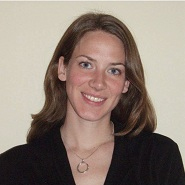For the past several semesters, Laura Brown, Ph. D., a Senior Lecturer in the Department of Chemistry, has informally surveyed students of her upper level Organic Chemistry laboratory course on their participation in research. Through these surveys, Brown found that a sizable portion of students were missing out on gaining valuable research experience.
Creating a CURE for Chemistry Students
60% of students are NOT involved in any form of research. Of those that are participating, half are in a department other than Chemistry. In our department, we are providing research experience for 20% of our majors.
A traditional research experience would have students working closely with faculty or AI’s in their lab. Despite the impracticality of getting Chemistry’s 400-some students into labs, Brown wondered what factors were causing so many students to miss these opportunities. A survey of the literature and her own anecdotal experience led her to two major reasons:
- First generation students are unaware of the informal process of getting involved, which requires knowing what they want to do and approaching a faculty member about it.
- Students who work part-time jobs while in school are often unable to take time beyond their class schedule for research experience.
A solution to both issues, Brown thought, would be to provide these experiences as a course where all students would have the opportunity to participate. This is where CURE comes into play. Brown noted that studies on Course-based Undergraduate Research Experience, or CURE for short, report the same types of gains as traditional experience. One of these benefits is retaining students in their particular degree, which is accomplished by increasing their self-identification as a scientist.
Students sign up for a CURE-containing laboratory course as they would any other course in a list of offerings. In return, they receive course credit and have built-in lab time in their schedules for running experiments. These time restrictions, however, present their own set of difficulties when developing a CURE:
- Labs typically meet 4-5 hours once per week and few experiments require a week for incubation.
- Ensuring the research project is not so complex that inexperienced students cannot participate.
These limitations meant that students would be creating a small library of compounds, catalysts, or molecules and setting up reactions to occur until the next lab session. Brown then went to colleague and biologist Julia van Kessel whose complimentary skillset would aid in developing a CURE within these confines.
The collaboration yielded a way for students to systematically test a set of small organic molecules for their ability to modify the behavior of a certain protein. This particular protein controls bacterial ‘communication’, and modulation of this protein by small molecules could allow researchers to control or even inhibit this communication, essentially causing them to lay dormant and thereby preventing virulence.
For assessment, Brown used the CURE Survey which was produced by collaborative efforts from professors at Grinnell College, Hope College, Harvey Mudd College, and Wellesley College. Students took this self-reporting survey as both pre-course and post-course surveys.
What did these surveys reveal? Students reported improvements in skills such as reading the primary literature. In addition, the percent of students interested in pursuing a grad degree had more than doubled in between surveys.

To me, that’s pretty good evidence that they identify as a scientist more at the end of the class than they did at the beginning.

